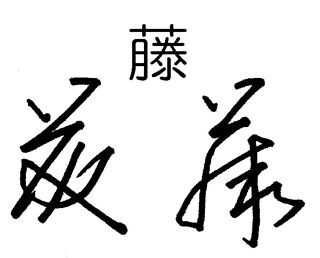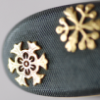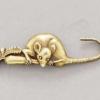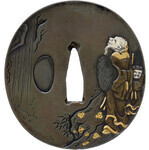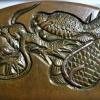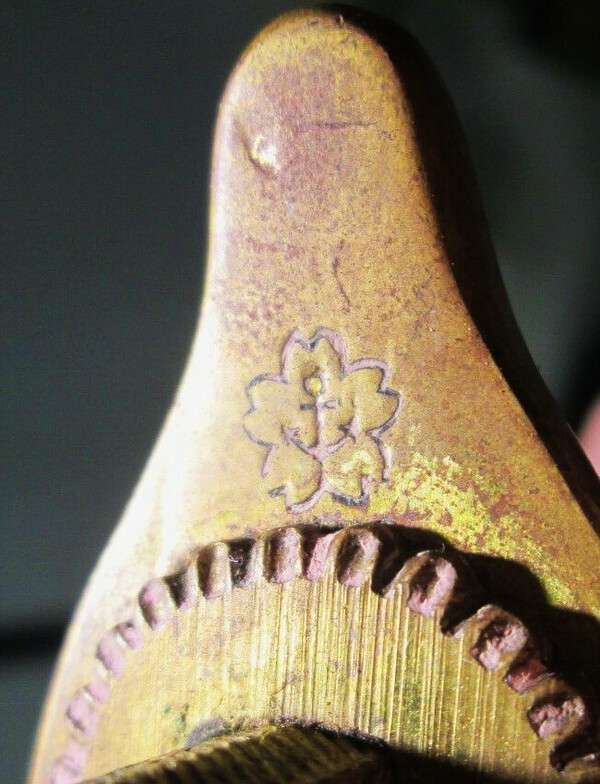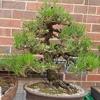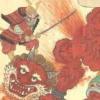Leaderboard
Popular Content
Showing content with the highest reputation on 09/16/2020 in all areas
-
4 points
-
3 points
-
2 points
-
Well, I never had. When this one came up at that recent auction in Texas, I went scrambling to find out what I could about them and then decided to sell my car to buy it (not literally, but one should know that my car, which I just traded in for a newer used car a couple of months ago) was only worth $1000 on trade in, considerably less than this sword cost. Anyway, according to Markus' Encyclopedia (one of the most useful sword books ever!), these swords were worn by the imperial family or by kuge, court aristocrats. Based on his further detailed description, and the fact that this one has mother of pearl inlay in a nashiji ground, it would have been owned by the highest level of kuge but not by a member of the imperial family. There are six or seven lower ranks of kuge that can be discerned by the types of koshirae on their kazari-tachi. I thought I would share a few of the photos. I am also debating about what to do with it in terms of restoration and papers, so feel free to share your views (other than it's worthless and that I should send it to you right away!). Cheers, Bob1 point
-
Hello Again, I grabbed this sword because I thought the old Koshirae handsome, the blade was mostly in polish and didn’t have many kizu, and it was at a good price. The downside is its lost its signature due to O-suriage and while I’m sure I’m looking at a Kanbun sugata, I’m not finding it all that easy to pin it down to a school/region. Very little curvature for sure (8mm), even compared to the sword Mr. Benson said was Bizen Muromachi which was not terribly curved. What curvature it has seems to start early, although I’m not sure just how much losing close to 10cm in length might have affected the shape. Nagasa length is still 66.2cm despite having been shortened to lose of much of the original nagako. As far as hada goes it looks like it starts with komokume and then further up the blade are large structures I think are some type of itame with small grain inside, often bordered by dark nie grains. I’m not sure but it looks a bit like the description of Echizen or Musashi hada from Connoisseur’s. Also the Shinogi has some roundish wood grain. The Hamon I can’t tell if it suguha or komidare, it’s straightish but wobbles a bit, might have hotsure. The kisaki looks like a chukisaki with a hakikake boshi. Nagako has katte sagari that seem to disappear above the first hole. So I guess my questions are: Am I correct in assuming this is a Kanbun Shinto? Would the sword having been produced near Edo be a reasonable guess? And is there any point in taking this to a shinsa once they return to America?1 point
-
IMHO uchikoing daily with top grade uchiko ball will do wonders for it. Bob Benson's are the best for the money.1 point
-
your seppa may be a second hand used seppa, and the inner has been hammered to fit a smaller tang size. It seems it's not necessary "the biggest seppa on habaki side" it's depending on actual saya and fuchi size. I have a sword with exact same section on fuchi and koi guchi, so boith seppa are identical except the dents due to habaki, seppa are ginkise, so quite easy to damage to silver foil. I remember I had another sword, where saya and fuchi were different, and seppa were different of course, when I make new seppa, I keep about 0,5 to 1mm extra material all around to fuchi or saya, then I make the slope and then I make the cuts. I remember even seen once a kinkise seppa with asymetrical shape to match the fuchi takazogan shape, so I made same one a sword I have here.1 point
-
We really need to see beneath the habaki, I have in the past seen a a genuine signed nakago joined to a spurious blade with the join hidden by an immovable habaki......1 point
-
1 point
-
1 point
-
1 point
-
In a darkened room, shine a single light down the length, Chris. If the edge of the hamon glows, you have a strong nioiguchi, & likely a top-notch blade. Not easy to photograph, though.1 point
-
1 point
-
A pride of any true collector to popoo someone else's find as an obvious fake. I am sure there is a consideration that such items were used in Edo period, but I am not sure how realistic it is. I think its a great buy for what essentially is showato money, and these things can be quite well made and they are not modern at all. Its also possible to relatively precisely date makie if there is a good photograph. Early Edo will have a tiny bit duller black, some argue it even has a tint of color to it, round makie gold particles, Genroku+ makie will have elongated particles of very bright gold color, Taisho+ tend to be more yellowish by comparison. Etc. Etc. But regarding the Imperial Household koshirae, I have very limited experience. But it tells me a few things - they did use real gold when it was called for on the highest caliber items, they did high quality guilding, were not that much into pure brass as gold replacement. They did not go for exact copies of older styles, the work also often reflects some of the techniques and craftsmanship you see on period's buddhist wares from Kyoto area. I had some discussion whether these could he household koshirae papered to a specific smith, and the general agreement was - its not well researched, there are some clearly Goto pieces, but much of tachi koshirae was probably made by someone local who could have been even outside the "commercial" market, so exact name is not something readily offered. I will throw another curved ball - today you can use any mon you like, but during Taisho 7-5 kiri mon and the kikumon were still more exclusive to the household. That's what you do often see on the household or kuge items. Actually if you have Satsuma sale cathalogue, the first page of sword section has a great image of "real ritual kazari-tachi". Its not an exact copy of old style, you clearly see its adopted many Edo period's elements, and well, its gold. Kirill R.1 point
-
In a sword fight anything can happen so it could very easily be fight damage. Its not like in the movies where its all choreographed. Tsuba are mainly for protecting the hand from sliding up onto the blade and from an enemies blade but there would be countless times tsuba were hit by blades producing these type of scars.1 point
-
1 point
-
1 point
-
Read this http://www.ksky.ne.jp/~sumie99/katanainfight.html I think your tsuba saw some battle. Sorry i have edited the post And a blade even with not much niku will get dull on impact and leaves a bigger scar. Nihonto have Niku unlike kitchen knifes. I made a little picture for a shinogi zukuri example1 point
-
Guys, much more damage than we realize here. Luckily, I’m in the market for unsightly blades such as this, perhaps you’d like to sell this quickly before it gets any worse 😆! Ha, Nice blade, Doug1 point
-
I have seppa like that I've no idea what it's doing other than making microscopic adjustment. The flat always faces the tsuba which has a more decorative side that buts up to a seppa then the Fuchi.1 point
-
I have been using Choji oil from a Japanese sword dealer on all my swords. I clean them with a microfiber cloth, and a bit of denatured alcohol. All of my swords are in polish. I started using Breakfree collector on one of my swords, and although it seems to work well at preventing rust, it is very thick and seems to attract dust. I wasn’t sure if it was the oil or my perception. Since I am thinking of trying other oil, I started researching alternatives. I have been looking at oil tests available online, but found that they are geared towards guns. The usual tests show someone treating a piece of metal with oil, spraying it with salt water, then leaving it out in the element for weeks. This seems like a good test for a gun which may be out in the elements for a week of hunting. My issue with these tests are that the conditions tested aren’t really what I’m concerned about. My main worry is someone touching my treated blade (either customs, a guest, sword show, or my own negligence) then being left unnoticed and then developing rust. I am also concerned about the oil attracting dust with sticky residue. My other minor concerns are oil staining the shirasaya and unpleasant smell. I developed a test based on these ideas, but focused more on nihonto. I used the same piece of mild steel. 36” long by 2” wide. I separated the steel into 11 equal sections, using 1” duct tape. I thoroughly sanded and cleaned the steel, then treated each section with a different type of oil. I left one middle section unoiled as a control. I used 10 different oils in my test: Choji oil from a well-known nihonto dealer in Japan. 3-in-1 multi-purpose oil. Breakfree CLP. Hoppe’s elite gun oil. Rem Oil. Eezox. Breakfree Collector. Marine Tuf-glide. Singer All-purpose Machine Oil. M-pro 7 gun oil. After liberally applying the oil, I wiped off any excess with a new cloth. I then set aside the steel for 10 minutes. I created a saline solution of 1%, which is similar to sweat, blood, and spit, any of which may end up on our swords. I applied saline solution to each section, then wiped it with my bare thumb. All of this was to simulate a situation where someone touches the bare blade. I then left the steel inside on a table to measure rust. I also put a sample of each oil into a zip-lock bag to judge color and smell. Finally, I treated separate knives with oil, let them dry, then touched each one to judge stickiness. Results to come!1 point





